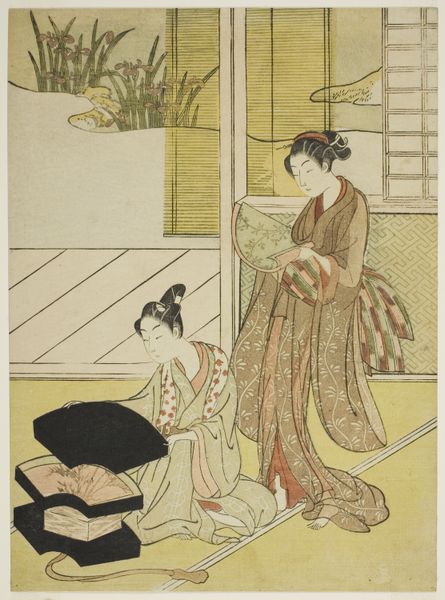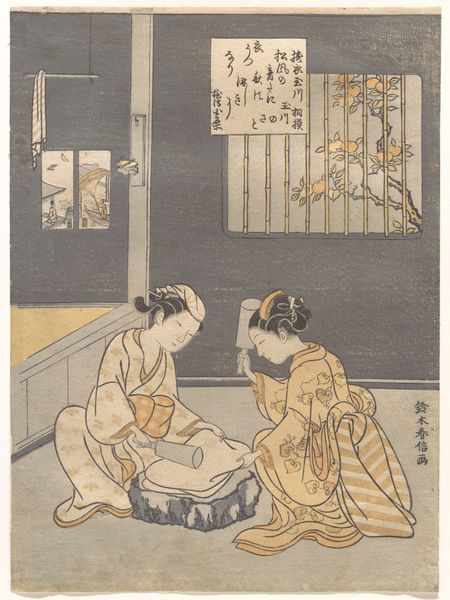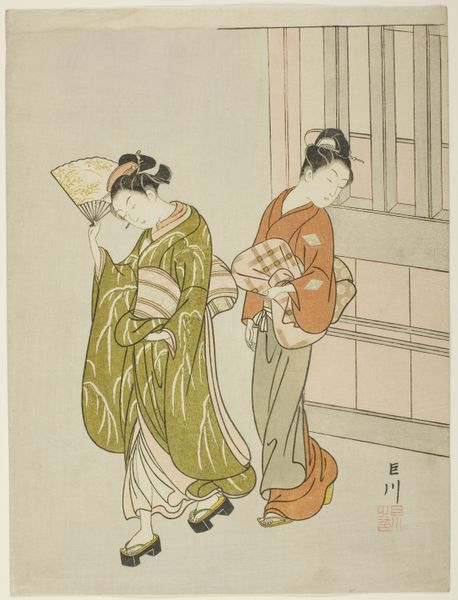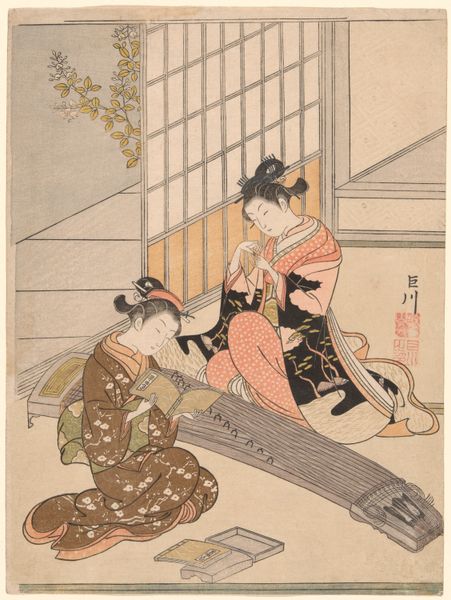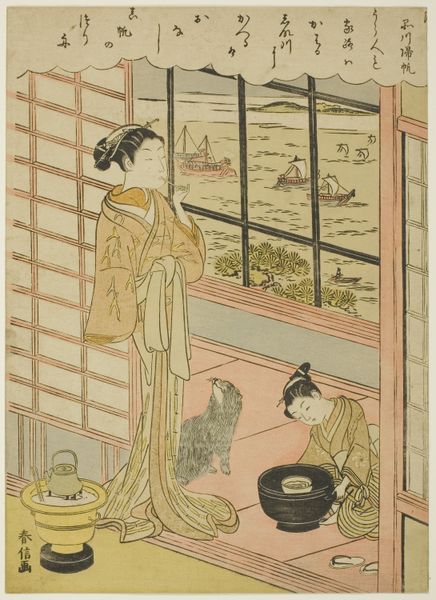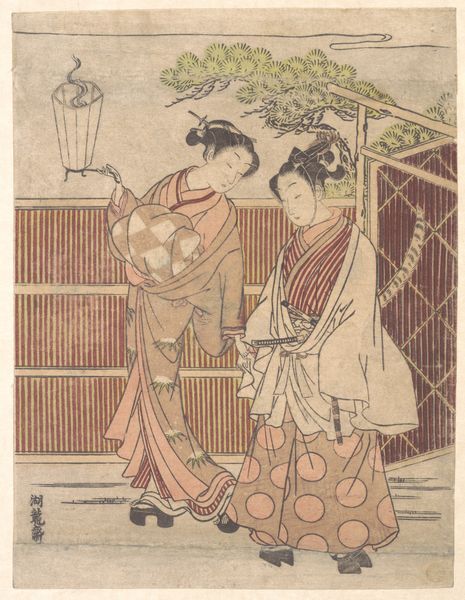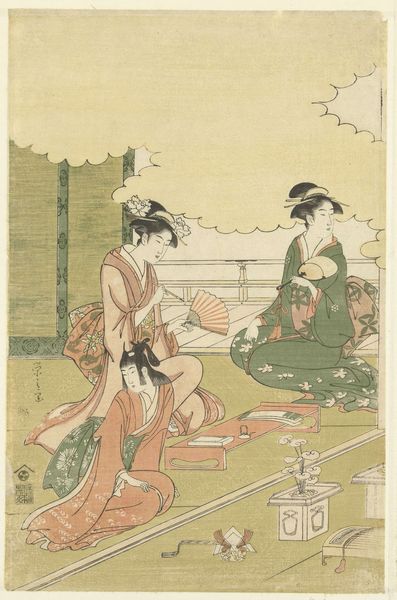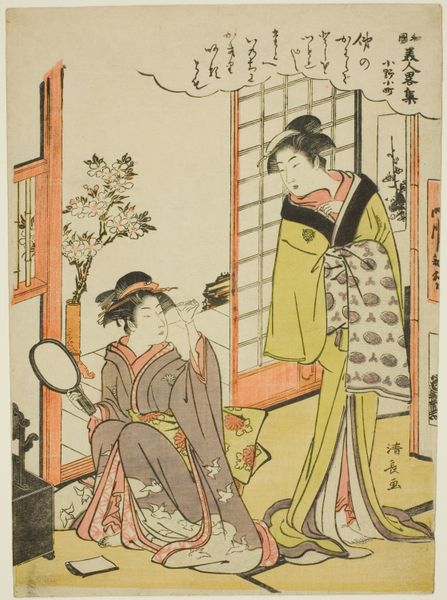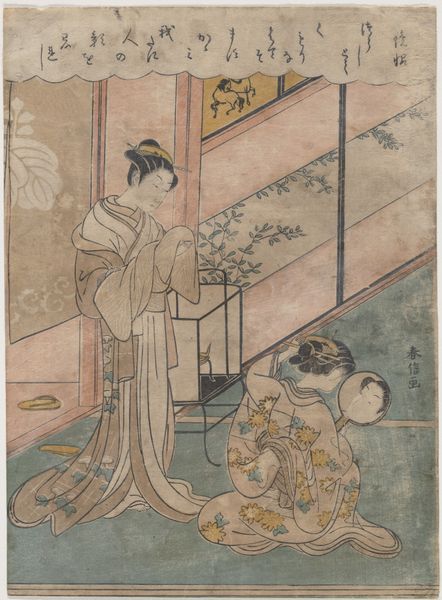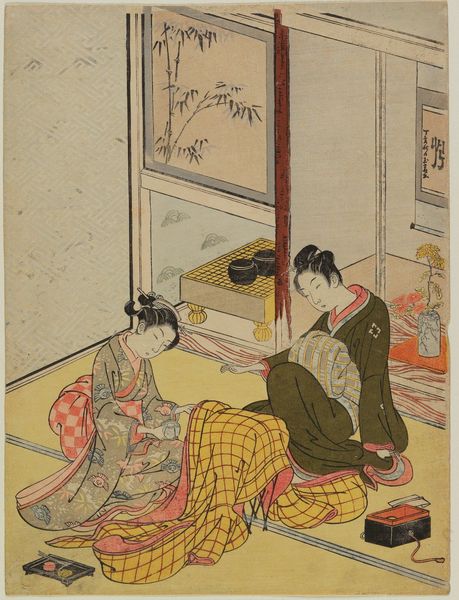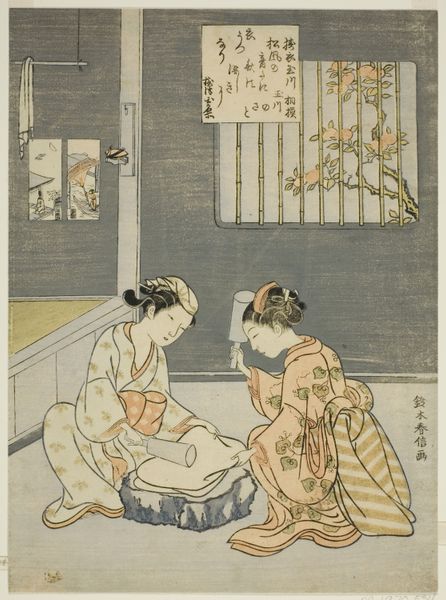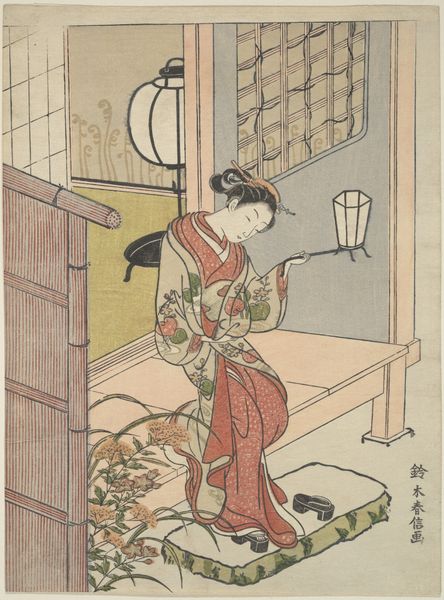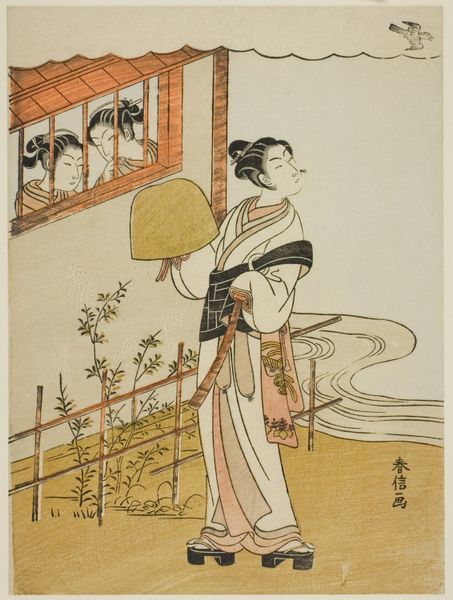
The Autumn Moon in the Mirror (Kyodai no shugetsu), from the series "Eight Views of the Parlor (Zashiki hakkei)" c. 1766
0:00
0:00
# print
#
asian-art
#
caricature
#
ukiyo-e
#
japan
#
figuration
#
intimism
Dimensions: 28.8 × 21.8 cm (11 1/4 × 8 3/8 in.)
Copyright: Public Domain
Curator: This print, currently residing here at the Art Institute of Chicago, is titled "The Autumn Moon in the Mirror" by Suzuki Harunobu, created around 1766 as part of his series, "Eight Views of the Parlor." Editor: Oh, my, it’s like stumbling upon a secret. There’s such tenderness and such gentle ordinariness that somehow feel revolutionary. Is this intimacy… subversive? Curator: Subversive might be strong, but you're tapping into something important. Harunobu was part of a wave pushing against established artistic norms. The ukiyo-e genre focused on scenes of everyday life, popular entertainment, and beautiful women—subjects considered vulgar by some academic circles. But what interests me most is how mirrors and reflection serve as enduring visual motifs. They amplify reality while subtly distorting it, inviting contemplation about truth and perception. Editor: Yes! The mirror reflecting the woman’s face, her true self reflected back. But it also brings a certain detachment, right? I’m sitting here wondering what the woman gazing into the mirror sees and if she is who she pretends to be to society or her true self. And do the autumn grasses outside of the window speak to a similar sense of melancholic impermanence? Curator: The symbolic readings you're drawing from the artwork fit very well with ukiyo-e culture and artistry. Autumn itself is very powerful symbolically, a reminder of life’s transient nature and it adds emotional resonance to the domestic setting, wouldn’t you say? And it seems the woman arranging the woman’s hair almost appears to be an automaton serving some high end master. But is she? I do wonder if the title draws connections to the Buddhist idea of the moon, being something beautiful but intangible in reality. Editor: Perhaps this seemingly simple scene speaks to the complexity of the female role in this historical era of Japan and how appearance versus reality holds a mirror to its society! It's funny how what at first glance appeared as a casual moment unfolds with hidden weight. Curator: Exactly. These fleeting glimpses into the lives of ordinary women have so much to say about cultural values, personal identity, and collective memory. Editor: Beautiful, this intimate portrayal whispers secrets. Curator: Indeed. A poignant echo across centuries.
Comments
No comments
Be the first to comment and join the conversation on the ultimate creative platform.
